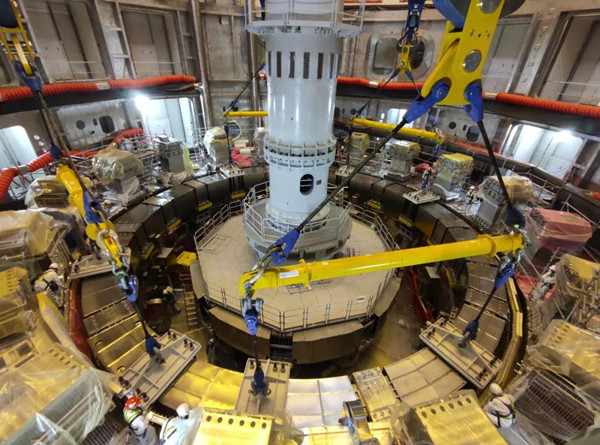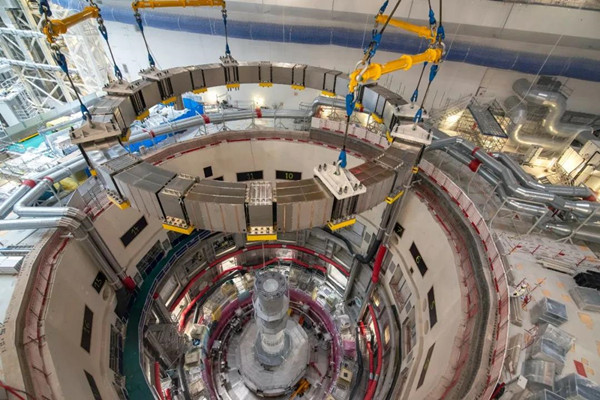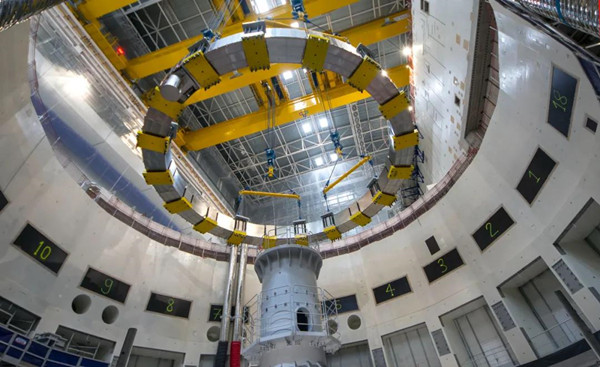ITER's main engine completes 1st-phase installation

The fifth Poloidal Field (PF5) coil of ITER (the International Thermonuclear Experimental Reactor) was successfully inserted in the Tokamak pit in Cadarache, France, on September 16, marking the completion of the first stage of the ITER project main engine installation and laying a key foundation for the second phase assembly of its vacuum vessel. This represents another milestone at the ITER site by TAC1, a China-France consortium, which significantly pushes forward the ITER project.

The PF5 coil, a magnet component at the bottom of the Tokamak, is the second huge coil component that has been assembled for ITER's superconducting magnet system. With a net weight of 315 tons, the coil (together with its support plate at the bottom and its lifting tools) weighs 383 tons. It is 18.6 meters in diameter and has an assembly accuracy of ±4 mm. Lifting the coil into place with only 3.6 cm away from its surrounding equipment, therefore, was a highly demanding task. Any slight error could’ve damaged the PF5 coil and its adjacent equipment.
The TAC1 team carried out many test runs for this maneuver. Through concerted efforts and close collaboration, the team successfully lifted the coil in a trial on September 13 and officially completed the entire operation with insertion on September 16.
Led by China Nuclear Power Engineering under China National Nuclear Corporation (CNNC), the TAC1 team is composed of the China Nuclear Industry 23 Construction Company of CNNC, CNNC's Southwestern Institute of Physics, the Institute of Plasma Physics of the Chinese Academy of Sciences (ASIPP), Framatome and other institutions.
In September 2019, the China-France consortium signed the TAC1 installation contract with the ITER organization. The TAC1 installation tender project is the most important core equipment installation project of the ITER Tokamak, mainly responsible for the installation of Dewar, superconducting magnets and feeder systems. Its importance is often referred to as the heart in a human body.
ITER is currently the world's largest fusion reactor experimental project, whose complexity and technical difficulties exceed those of fission reactors that have been built and operated in large numbers. There is no established experience for the TAC1 installation project to refer to, which means there are many major technological challenges all along the way, including the lifting and assembly of components that are large in size and heavy, the installation of high vacuum or ultra-high vacuum parts, and the installation and connection of superconducting parts.

- China Institute of Atomic Energy
- Nuclear Power Institute of China
- Southwestern Institute of Physics
- China Nuclear Power Operation Technology Corporation, Ltd.
- China Nuclear Power Engineering Co., Ltd.
- China Institute for Radiation Protection
- Beijing Research Institute of Uranium Geology (BRIUG)
- China Institute of Nuclear Industry Strategy (CINIS)
- China Nuclear Mining Science and Technology Corporation


